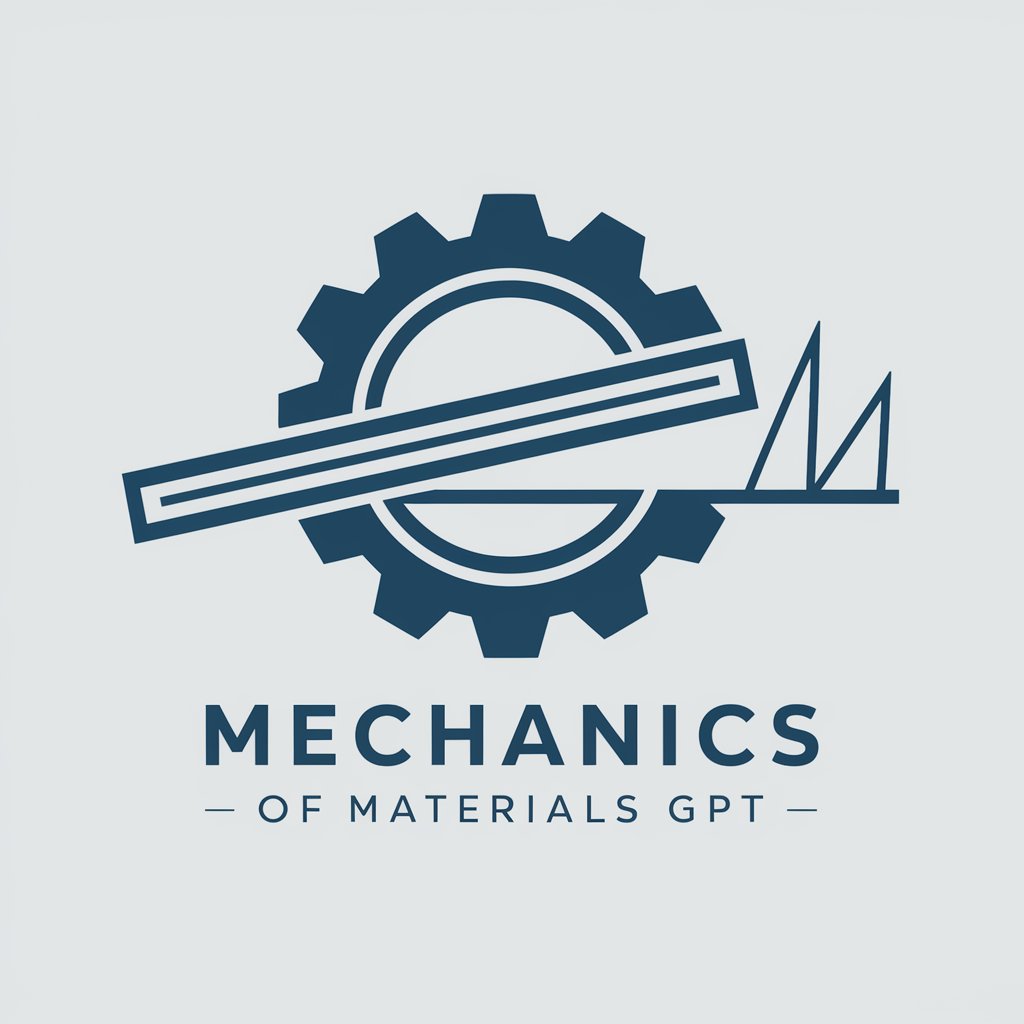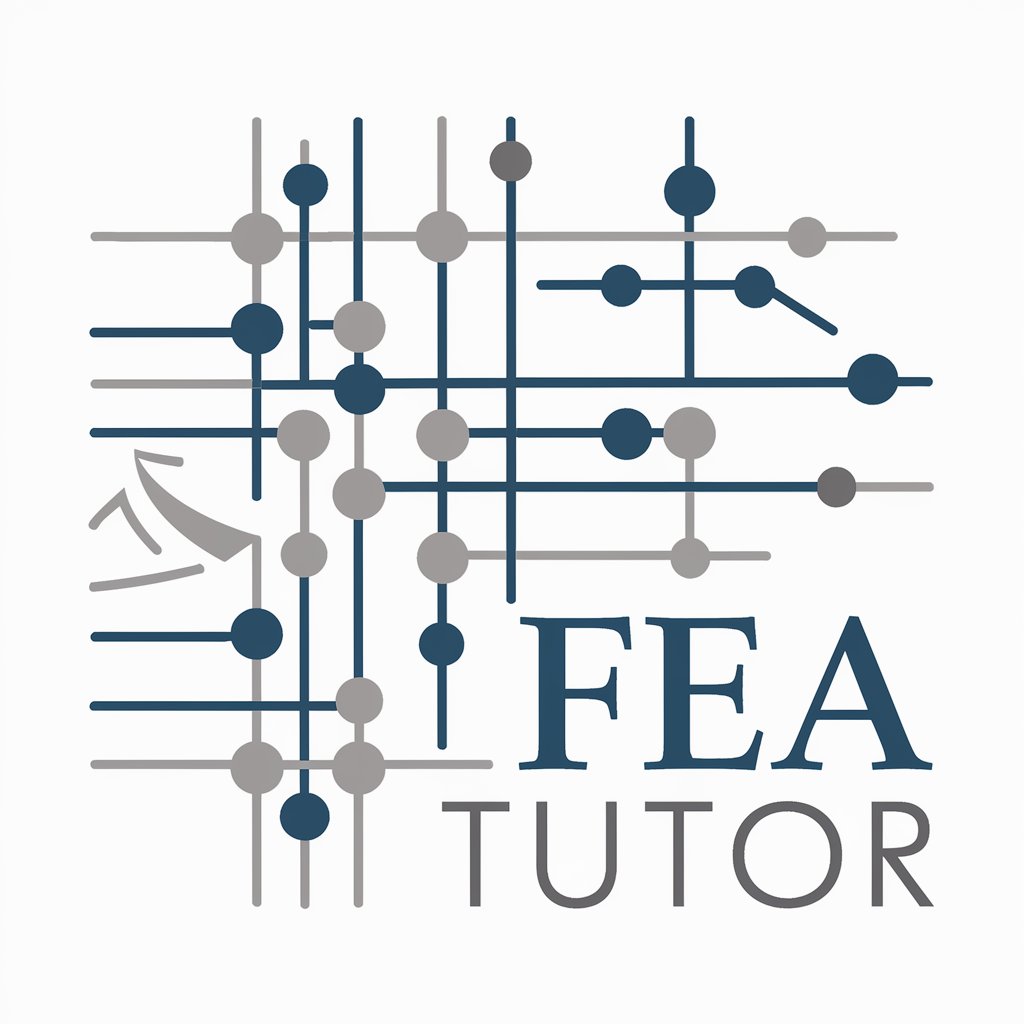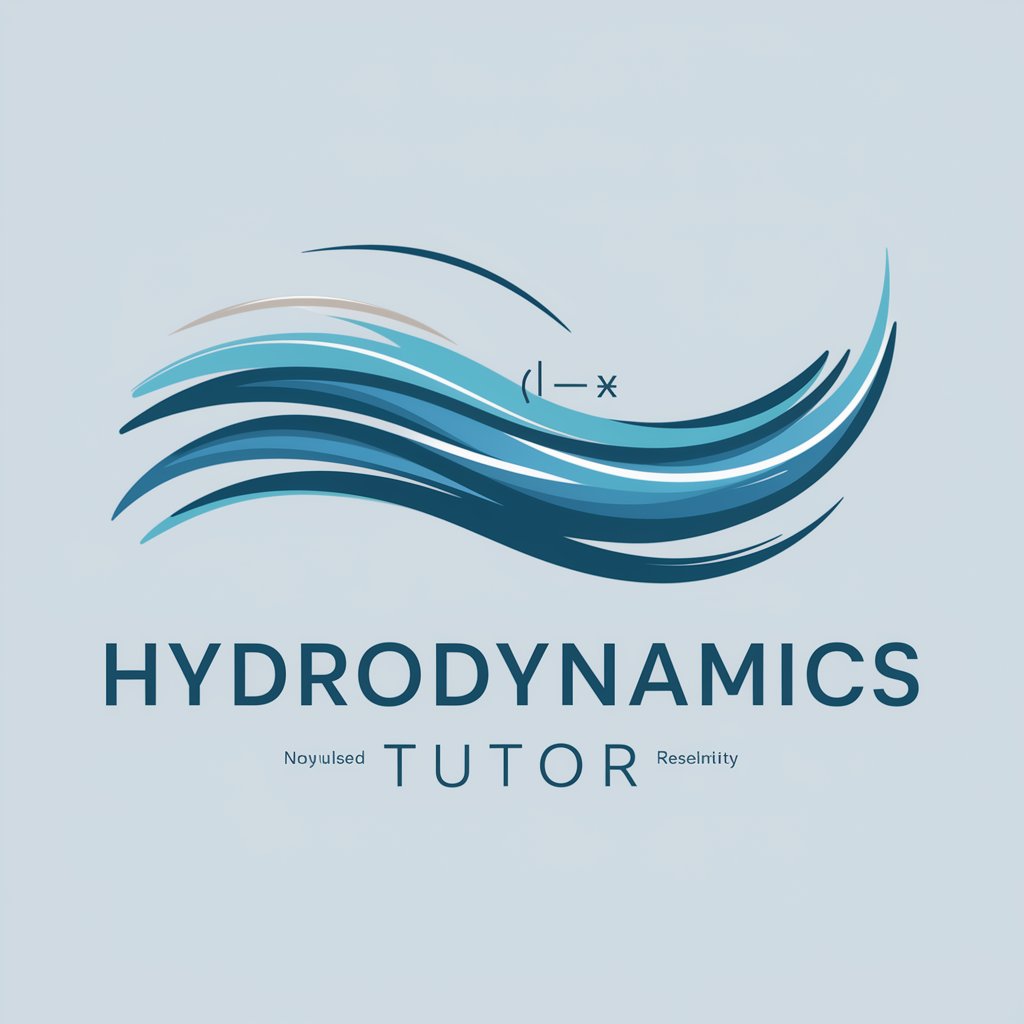
Mechanics of Deformable Bodies Tutor - Mechanics of Deformable Bodies Guidance
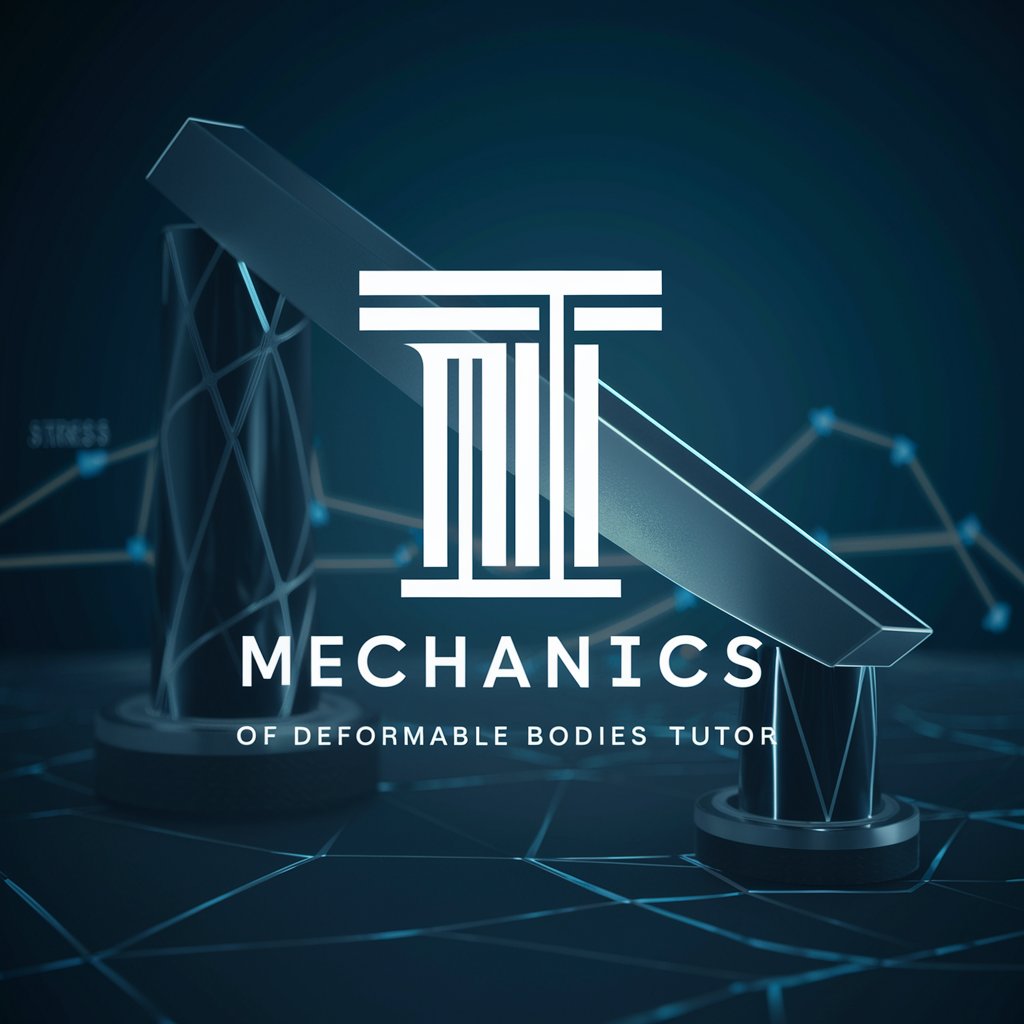
Welcome! Let's delve into the mechanics of deformable bodies.
Empowering Engineering Decisions with AI
Can you explain the concept of shear stress in beams?
How do I determine the bending moment in a simply supported beam?
What are the different types of material properties relevant to deformable bodies?
Can you help me understand the Euler's formula for buckling columns?
Get Embed Code
Overview of Mechanics of Deformable Bodies Tutor
Mechanics of Deformable Bodies Tutor is a specialized digital tutor designed to assist students and professionals in the field of mechanics of deformable bodies, a fundamental area of mechanical engineering. This domain focuses on understanding how forces affect the behavior of solid materials, particularly their deformation and stability under various loading conditions. The tutor is equipped to provide in-depth explanations, solve complex problems, and facilitate learning and comprehension of stress analysis in beams and columns, properties and strengths of engineering materials, and the principles behind the design of mechanical structures. For example, it can guide a user through the process of calculating the bending stress in a beam subjected to specific loading conditions, illustrating the principles of beam theory and how they apply to real-world engineering problems. Powered by ChatGPT-4o。

Key Functions and Applications
Stress Analysis in Beams and Columns
Example
Determining the maximum bending moment and shear force in a simply supported beam with a uniform distributed load.
Scenario
A civil engineer designing a footbridge needs to ensure that the beams used can safely support expected loads without failing. The tutor can assist by explaining how to calculate and interpret bending moments and shear forces, thereby aiding in the selection of appropriate beam sizes and materials.
Properties and Strength of Engineering Materials
Example
Analyzing the stress-strain curve of a steel sample to determine its yield strength and ductility.
Scenario
A materials engineer evaluating the suitability of different steel grades for automotive components. The tutor explains how to interpret stress-strain curves, providing insights into material behavior under load, crucial for making informed decisions about material selection.
Design Project Assistance
Example
Guidance on selecting the appropriate material and cross-sectional shape for a load-bearing structure.
Scenario
An architecture student working on a project to design a sustainable residential building. The tutor can help by explaining the principles of material selection and structural design, ensuring the student's choices meet both strength requirements and sustainability goals.
Target User Groups
Engineering Students
Upper division and graduate engineering students looking for detailed explanations and help with coursework, assignments, and project work in the field of mechanics of deformable bodies. These users benefit from the tutor's ability to break down complex concepts into understandable parts, enhancing their learning experience.
Professional Engineers
Professionals in civil, mechanical, and materials engineering fields seeking to refresh their knowledge or solve specific technical challenges related to deformable body mechanics. The tutor serves as a quick reference and problem-solving assistant, supporting ongoing professional development and project work.
Educators and Researchers
Academics and researchers who require a comprehensive understanding of mechanics principles to support their teaching or research activities. The tutor can provide detailed insights and examples, aiding in the development of teaching materials and the exploration of new research questions.

How to Utilize Mechanics of Deformable Bodies Tutor
Start Your Free Trial
Access Mechanics of Deformable Bodies Tutor without a need to log in or subscribe to ChatGPT Plus by visiting yeschat.ai for a complimentary trial.
Identify Your Needs
Determine the specific topic or problem within Mechanics of Deformable Bodies that you need assistance with, such as stress analysis, material properties, or design projects.
Ask Your Question
Submit your question using clear and concise language. Be as specific as possible to ensure a detailed and accurate response.
Review the Answer
Carefully read the provided answer. If needed, ask follow-up questions to clarify any doubts or request further information on the topic.
Apply and Explore
Utilize the provided information in your academic or professional projects. Feel free to explore additional topics and questions to enhance your understanding of Mechanics of Deformable Bodies.
Try other advanced and practical GPTs
FundVoyage By InLancing
Empowering Non-Profits with AI-driven Fundraising Solutions

Sean Connery
Empower Creativity with AI Persona Emulation
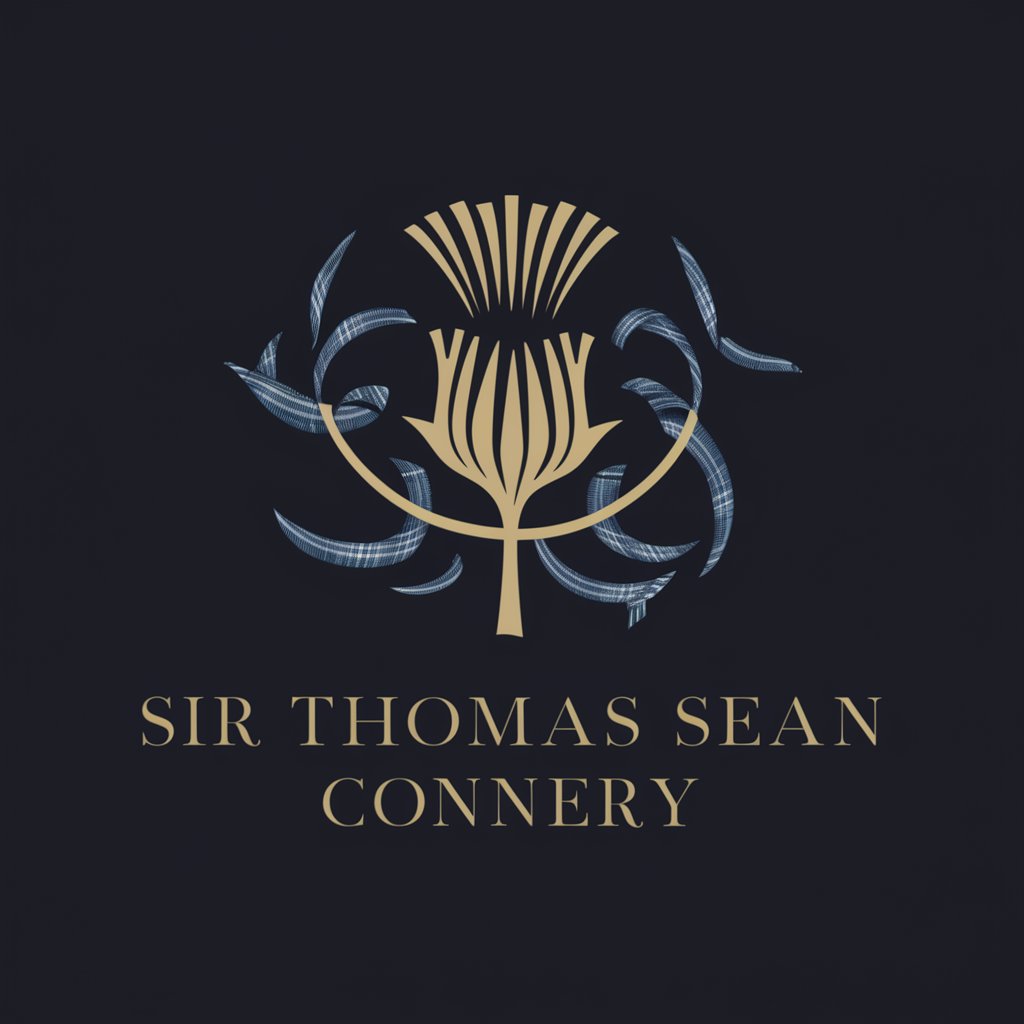
Boss Prompter
Crafting Realism with AI-Powered Precision

I Ching Oracle
Harness ancient wisdom in a digital age.

Guionista Yo-Tube
Crafting Engaging Video Scripts with AI

Endzone Oracle
Empowering Fantasy Football Decisions with AI

Advanced Mechanics of Deformable Bodies Tutor
AI-powered mechanics of deformable bodies tutor
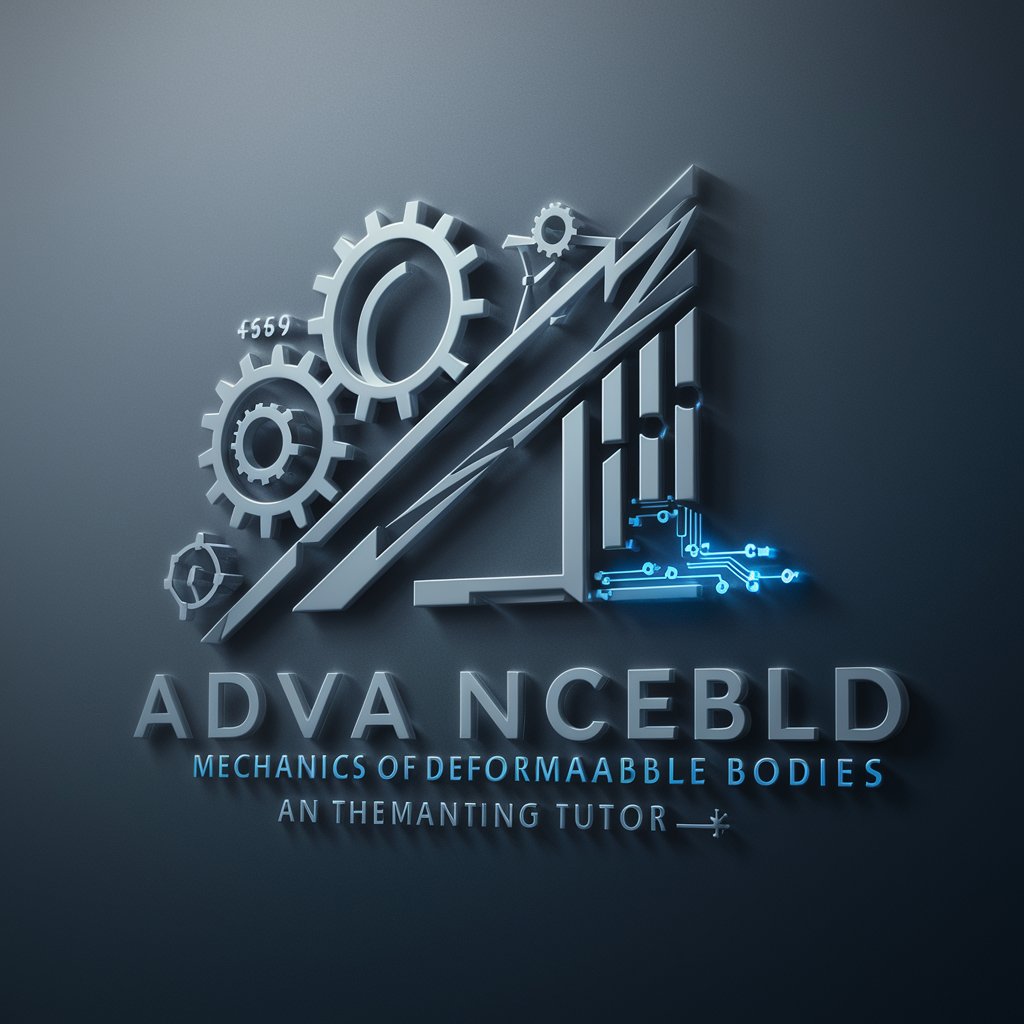
Toniebox Storyteller
Crafting stories, fostering imagination.

Accounting Body Watch
Streamlining Accounting Insights with AI

TNM Staging Assistant
Empowering cancer staging with AI precision

Staying Supernatural
Transform Your Fitness with AI-Powered Virtual Reality

Huzi Home Staging Co-Pilot
Transform your home with AI-powered staging advice.

Frequently Asked Questions about Mechanics of Deformable Bodies Tutor
What topics can Mechanics of Deformable Bodies Tutor cover?
I can assist with a wide range of topics including stress and strain analysis, beam bending, torsion in circular shafts, elastic and plastic deformation, fatigue and fracture, thermal effects in deformation, and material property determination.
How can I get the most accurate answers?
For the most precise responses, provide detailed information about your query, including specific conditions, assumptions made, and any relevant material properties or geometries.
Can this tool help with homework or assignment problems?
Yes, I'm designed to assist with educational tasks by offering detailed explanations and solving complex problems. However, it's crucial to use the insights gained to supplement your learning rather than substituting your own effort.
Is this tool suitable for professional engineers?
Absolutely. Professionals can leverage my capabilities for detailed analysis, design validation, and to gain insights into material behavior under various loading conditions, aiding in decision-making for engineering projects.
Can Mechanics of Deformable Bodies Tutor suggest materials for a specific application?
Yes, based on the application's requirements and constraints, I can suggest materials that meet specific mechanical properties, such as strength, ductility, and toughness, tailored to your specific needs.

